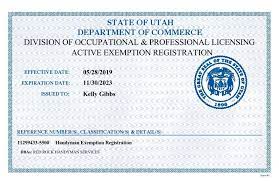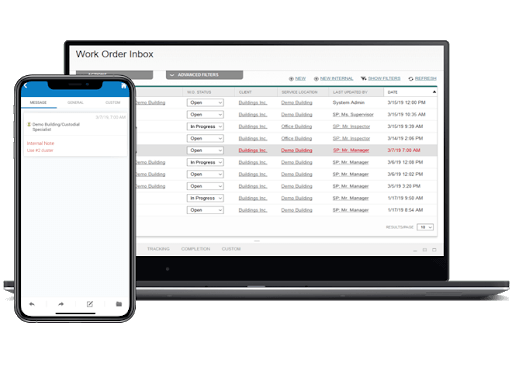
There are many DIY flooring repairs that you can do, including refinishing vinyl floors or repairing squeaky floors. These are some easy ways to make the job easier. You'll have a brand-new floor in no time! You'll also be able enjoy it without having to spend a lot. Consider hiring a flooring professional if you're not confident about your DIY skills.
Squeaky floors can be fixed
Many homeowners have complained about creaky floors. The noise can not only be annoying but it can also deter potential burglars. Squeaky floors can be repaired by removing carpet and installing a squeak-silencer tool. This device allows you to drill screws into the subfloor underneath the wood to eliminate the squeak. Using this device is easier than you think.

Before you begin this procedure, be sure to check for any gaps under the floor. A gap can be anywhere between the floor joist and the subfloor. If you need to remove insulation, apply carpenter’s glue to a thin shim. Finally, insert the shim in the gap. If this fails, replace the subfloor by using a more durable material. This will prevent squeaky floors.
Refinishing hardwood floors
Refinishing hardwood flooring is an excellent choice, whether it is damaged or in need of a makeover. This flooring repair will cost you less than sanding a hardwood floor. Screening the old finish should be your first step. After you have removed all dirt and debris, you can apply a new finish. Once the new finish is applied, follow the steps below to achieve a flawless finish.
Water damage can also be caused by regular cleaning or wearing of the protective coating. Water-damaged hardwood flooring can become gray or black, with darker wood showing more damage. Refinishing hardwood floors may be a good option to restore the flooring's structural integrity. Even if the cracks or splits are not large enough to fix, stain pens can mask them. Just keep in mind that this flooring repair will only work for hardwood floors.
Patching vinyl floors
It is important to identify the type of flooring that you have before you start patching vinyl floors. The putty knife can be used to apply the patch material onto the floor. Apply a liquid glue to seal the seams. Let the patch dry completely before moving on to the next step. You can apply another coat if your patch isn't permanent. Finally, wipe the entire area with a cloth or rag to remove the excess patch material.

If the damage is severe, you might consider applying a vinyl flooring repair kit. These kits cover imperfections as small as a quarter. The supplies can be purchased at a hardware shop or online. Make sure you prepare the surface for adhesive adhesion. Then, cover the slit with a half inch of tape. Spread the adhesive evenly over the entire floor. If you have a printed finish, you should avoid patching a vinyl floor with this adhesive as it will leave ugly marks.
FAQ
What license do I need to become a handyman in order to get my permit?
A license is not required to become an independent contractor in most States. However, you will still need to meet certain conditions:
-
Minimum 18 years.
-
A high school diploma or GED is required.
-
Completion of a 4-week course at a vocational high school.
-
Check your background through the Department of Licensing.
-
Annual registration requires payment of $20
You will also need a workers' comp insurance and a business license.
Why should I hire someone to do the job instead of doing it myself.
Hiring a handyman saves time and money. This saves you time and money. Hire a handyman to help you with your job.
Is it possible for a handyman to install new fixtures or appliances?
You can always hire a handyman to help with these kinds of projects. Before you start installing any appliance or fixture, make sure you have the right information.
How often should I hire a handyman?
It all depends upon the nature of your job. A handyman may be all you need for a small job, such as replacing a light bulb. But, if you have a lot to remodel, you may need multiple handymen.
Statistics
- More than 20% of homes in America have outdoor living spaces, including decks and patios. (mrhandyman.com)
- Our handyman services for seniors are provided by professional senior helpers who have been serving the community for over 20 years with 98% customer satisfaction. (cantatahomeservices.org)
- An estimate was that in 2003, the market for home maintenance and repair spending was up 14% 2001 to 2003. (en.wikipedia.org)
- Another estimate was that the market in the United States was $126 billion and was increasing by about 4% annually. (en.wikipedia.org)
- According to the U.S. Bureau of Labor Statistics, in May 2020, there are 1,357,630 handymen employed in the U.S.. (angi.com)
External Links
How To
How to Replacing a Broken Tile
Step 1 – Remove the tiles.
You can remove the old tiles from your floor and save them. These tiles will be useful later on, so you'll need to keep them intact. It's important to note which parts are missing or damaged in order to be able to find the right replacements.
Step 2 - Choose New Tiles
You can take a look at the different options for tile replacement.
-
Locate a replacement tile that is the same as the one you just removed.
-
You can use the measurements taken when you removed the tile to locate a matching piece. This makes it easier to get the right size without having to measure again.
-
Find colors, patterns textures, sizes and shapes in all possible combinations.
-
Consider what grout you'd like to use (if any). Some people prefer to use a single color, while others love mixing it up.
-
You should ensure that the tile you choose is resistant to moisture.
-
Also, think about where you want to place your new tile. This will help you save time and money.
-
Once you've decided on your tile, you can order it online or by calling your local Lowe's to place your purchase.
Step 3 Install the new tiles.
You can install new tiles in the same way you did before. Make sure they are aligned correctly so that they fit together perfectly.
Step 4 – Clean up
Clean up any debris on the floor before you apply the last layer of protective material.
This will prevent dirt or dust from collecting between the tiles and causing mold.
Step 5 - Sand the Floor
After cleaning, sand the floors to remove any particles.
Step 6 -- Finish Off
Once the floor is smooth, apply the protective coatings. It's important to wait until this point because wet paint can stain the surface of the new tiles.
Remember, you can always use a product called "damp-and-dry" on your floors to help protect against stains.
However, it will not cover all possible problems that may arise after you have installed your tiles. If you have children, an anti-slip coating may be a good idea.
Remember to let the protective sealer remain on for several additional weeks before you move into your home.